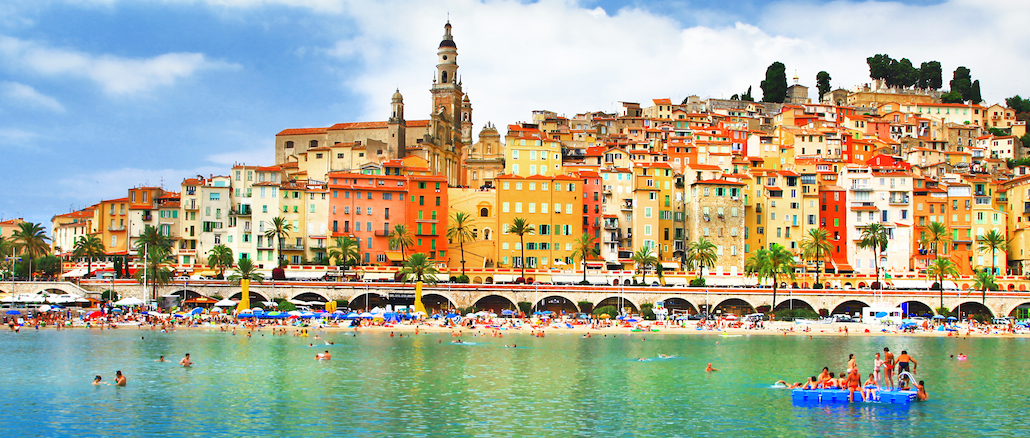
Tim Leake is svp, director of growth & innovation at advertising agency, RPA.
I spent the last week at the Cannes Lions International Festival of Creativity, riding a roller coaster of emotions triggered by what I experienced. I found myself fluctuating between feelings of excitement and inspiration, and feelings of bitterness and disillusionment.
So, what follows is an inner conversation between those two halves of me, in an attempt to somewhat accurately capture the bigger picture.
Excited-Tim:
My head is swimming with inspiration. It’s an exhausting, overscheduled week of no sleep — but I have a notebook half-filled with the amazing ideas and concepts I saw there. Then I filled the other half of the notebook with my own ideas, concepts and innovations inspired by what I saw.
Disillusioned-Tim:
I found the work amazing, but at the same time, found myself annoyed at how little of it felt like the answer to what we’re really supposed to do for our clients. A massive majority of the winners were for NGOs or “causes” with clever solutions that brands slapped their logos onto. None of this is designed to specifically affect consumer behavior as it relates to generating sales. It’s not unimportant, but I wish I was seeing more stuff that was aligned with the actual job of advertising.
Excited-Tim:
But perhaps the mission of Cannes isn’t to show the best advertising, from an effectiveness point of view. It’s called the Festival of Creativity, not the Festival of Sales Success. John Owen, from Dare, wrote a great piece on Medium comparing Cannes to a fashion show. Real people don’t buy haute couture — yet, ready-to-wear products are influenced by the trends and styles introduced there. When agencies stretch their creative muscles on brilliant work, that craftsmanship, thinking and muscle-memory begins to seep into everything they do. It also makes it all the more special when a campaign comes along that is both brilliantly creative and sales-driving.
Disillusioned-Tim:
I was also a bit dismayed by the overwhelming presence of ad tech companies this year. I have a genuine fear that the art and craft of creating an unreasonably powerful piece of behavior-changing advertising is being replaced by a world run by computer algorithms that make creative executions a commodity, rather than a solution.
Excited-Tim:
I think that’s taking a narrow definition of creativity, though. Possibly the biggest trend I took away from Cannes this year is that “creativity” is quickly evolving. It’s not just about a writer and art director making ads. Amir Kassaei from DDB gave a very honest and emotional talk this year and said: “A creative isn’t just someone who comes up with ideas, but someone who believes they can change things.” I love that, and agree with it 110 percent. The advances and solutions happening in the ad tech world are incredibly innovative and powerful. They are seeing a world different from what we’re used to, and making it happen. We can either complain about the fact that it’s different — or embrace it and add even more creativity to leverage its true power.
Disillusioned-Tim:
I met a surprisingly nice kid named Cameron Dallas, in the back of a tiny coffee shop one afternoon. I had no idea who he was. But over the course of chatting for maybe ten minutes, no fewer than eight young women came up to him for an autograph. Turns out, he’s a social-media superstar — nearly 8 million Vine followers, nearly 5 million Twitter followers, nearly 4 million YouTube subscribers. Later that night, I clicked on one of his YouTube videos, which consisted of Cam randomly calling girls and saying “hey.” This went on for about five minutes and has 1.1 million views. Most brands would kill for those numbers, and that’s not even one of his popular ones. Not to mention — there’s a very cleverly inserted Crocs brand mention in there, too, for which I bet he got paid handsomely. Leveraging influencers is phenomenally effective, but not much fun for creative ideas.
Excited-Tim:
Funny — I had the same encounter with Cam. But I took away a crystal-clear understanding of where the bar has moved to. We think we can take the same kind of approach advertising traditionally has (create a clever piece of content and include a sales message) and that people in today’s world will care. But it doesn’t work that way anymore. Cam, and influencers like him, innately understand the power of building a network and a community of fans. And it’s short-sighted not to see amazing creative opportunities in how we could collaborate.
Disillusioned-Tim:
Okay, last topic — artificial intelligence is predicted to be a very real part of our lives within the next 15 years, and was a big deal this year, too. At that point, ads start writing themselves. Products start marketing themselves. Change begins accelerating even faster than it is now. It opens up a vast sea of the unknown, and it’s scary as hell.
Excited-Tim:
I agree. It opens up a vast sea of the unknown — and it’s exciting as hell.
More in Marketing

How the MAHA movement influenced food and beverage brands in 2025
The MAHA movement has come to stand for different things in different people’s eyes, depending on which initiatives they most closely follow.

Why Georgia-Pacific is turning its programmatic scrutinty to the sell side
The company is turning its attention to the sell side, zeroing in on the ad tech firms that move inventory for publishers — the supply-side platforms.

Future of Marketing Briefing: Why ‘just good enough’ is generative AI’s real threat to marketers
When characters and mascots are allowed to live inside generative systems, they stop being event-based and start becoming environmental.





